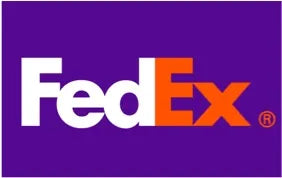Bringing a new product to the market is an exciting and challenging journey. When it comes to manufacturing a new product, China has become a popular choice for many companies due to its cost-effectiveness and abundance of resources. However, developing and manufacturing a new product in China can be complex, and there are several steps involved. In this blog, we will guide you through the process and provide you with a comprehensive overview of how to develop and manufacture a new product in China.
Table of Contents
· Have a new product idea
· Create a prototype or design of the product
· Find suitable suppliers
· Estimate the cost of the whole project
· Customize a pre-production sample
· Choose private label and packaging solutions
· Use the sample product to start marketing
· Intellectual property and compliance certification
· Start massive production
Having a new product idea is the first step in the journey of product development and manufacturing. There are two common types of product ideas - those that solve a specific problem and those that offer a unique or innovative solution.
For example, a product that solves a specific problem could be a portable water purifier designed for outdoor activities. The problem it solves is the lack of access to clean drinking water while on the go. On the other hand, a unique or innovative product idea could be a smart bike lock that uses biometric identification for unlocking. This product offers a new and more secure solution compared to traditional bike locks.
One advantage of having a new product idea is the potential for it to be profitable if it is successful in the market. Another advantage is that it can potentially create a new market or disrupt an existing one, leading to increased competition and growth. However, there are also risks involved in developing and launching a new product. The product may not perform well in the market or the development process may be more complex and expensive than expected.
Therefore, it is important to carefully consider and validate the product idea before proceeding with the development process. This can be done through market research, customer feedback, and conducting a feasibility study.
II、Create a prototype or design of the product
Creating a prototype or design of the product is an important step in the product development process. It involves taking the initial concept and turning it into a tangible form that can be tested and evaluated. The goal is to create a working model that accurately represents the features, functionality, and overall look and feel of the final product.
There are several approaches to creating a prototype, depending on the type of product and the resources available. Some common methods include:
Sketching and hand drawings - This method is suitable for early-stage product ideas where a visual representation is needed to help refine the concept.
3D printing - This method allows for quick and cost-effective production of a physical model. The model can be made with a variety of materials and can be used for testing, marketing, and presentation purposes.
CAD (Computer-Aided Design) - This method is a more advanced option that involves creating detailed technical drawings and specifications of the product. This is often used in conjunction with 3D printing to produce a high-quality prototype.
Once the prototype is created, it can be tested and refined to ensure that it meets the desired specifications. This process is iterative and may involve multiple iterations before the final design is approved.
Having a working prototype is a crucial step in the product development process as it provides a visual representation of the product and helps to identify any potential design or functional issues that need to be addressed.
III、Find suitable suppliers
Finding suitable suppliers is a crucial step in the process of developing and manufacturing a new product in China. There are several types of suppliers that can be considered, including manufacturers, trading companies, and agents.
Manufacturers are typically the best option for high-volume production and have the capabilities to handle complex manufacturing processes. Trading companies, on the other hand, are often more flexible in terms of minimum order quantities (MOQs) and can offer a wider range of products. Agents are intermediaries who can help source products and negotiate prices, but they may also charge additional fees.
When deciding which supplier to work with, there are several critical points to consider. Firstly, it is important to evaluate the supplier's experience and expertise in the relevant product categories. Secondly, the supplier's production capabilities and capacity should be evaluated to ensure that they can meet the project's requirements. Thirdly, the supplier's quality control and inspection processes should be evaluated to ensure that the final product meets the desired quality standards.
Before starting work with a supplier, it is also important to prepare ready for a Non-disclosure Agreement (NDA). An NDA is a legal agreement that protects confidential information from being disclosed to third parties. This is particularly important for new product development, where confidential information such as product designs and specifications may need to be shared with suppliers. By having an NDA in place, the project's confidential information is protected, ensuring the success of the project.
IV、Estimate the cost of the whole project
Estimating the cost of a new product development project in China is a crucial step in the process. It requires careful consideration of various factors such as material and labor costs, tooling and equipment expenses, and shipping and customs fees. Accurate cost estimation will help you determine the viability of the project, set a realistic budget, and negotiate with suppliers. Here's what you need to consider when estimating the cost of your new product development project in China:
Material Costs: The cost of raw materials, including plastics, metals, and electronics, will make up a significant portion of your product's overall cost. It's essential to research the market and compare prices from different suppliers to get the best deal.
Labor Costs: Labor costs in China are generally lower than in other countries, but they still need to be considered when estimating the cost of the project. You should factor in the cost of assembly and inspection, as well as any additional services such as packaging and labeling.
Tooling and Equipment Expenses: Tooling and equipment expenses include the cost of molds, jigs, and fixtures used in the manufacturing process. This cost can be substantial, especially for products with complex shapes or designs.
Shipping and Customs Fees: The cost of shipping and customs fees will depend on the weight and size of your product, as well as the shipping method you choose. You should also factor in any tariffs or duties that may be imposed on imported goods.
Additional Costs: There may be additional costs associated with product development in China, such as testing and certification, quality control, and intellectual property protection. It's essential to factor in these costs in your overall project estimate to ensure that you have a realistic budget.
In conclusion, estimating the cost of a new product development project in China requires careful consideration of multiple factors. A realistic and accurate cost estimate is essential to ensure the success of your project and ensure that you have a clear understanding of the expenses involved.
V、Customize a pre-production sample
Customizing a pre-production sample is a crucial step in the new product development process in China. It allows you to test the feasibility of your product design and make any necessary adjustments before beginning mass production. The pre-production sample serves as a prototype and helps you refine the product to meet the desired specifications. Here are the steps involved in customizing a pre-production sample in China:
Work with your supplier: Work closely with your supplier to ensure they understand your specifications and design requirements. Provide them with clear instructions, specifications, and any other relevant information to ensure they have a good understanding of what you are looking for.
Sample production: Once your supplier understands your specifications, they will produce a sample of the product for you to review. The sample may take several weeks to produce, so plan accordingly.
Review the sample: Carefully review the sample and make any necessary adjustments. This could involve anything from changing the size or shape of the product to making changes to the materials or manufacturing process. Work with your supplier to make any necessary changes until you are satisfied with the sample.
Test the sample: Testing the sample is crucial to ensure it meets your quality standards and functions as intended. This could involve running laboratory tests, using the product in real-world scenarios, or any other type of testing that is appropriate for your product.
Finalize the design: Once you are satisfied with the sample, finalize the design. This includes verifying that all specifications are met, that the product functions as intended, and that it meets your quality standards.
In conclusion, customizing a pre-production sample is an important step in the new product development process in China. It helps you refine the product design, ensure it meets your specifications, and ultimately produce a high-quality product that meets your needs.
VI、Choose private label and packaging solutions
Choosing the right private label and packaging solutions is a crucial step in the product development process. This is because it helps to create brand recognition and sets your product apart from others in the market. Here are some of the popular processes involved in private labeling and packaging solutions:
Branding and labeling: This involves creating a unique brand name, logo, and product labels that reflect the quality and uniqueness of your product.
Packaging design: This involves creating a custom design for your product's packaging. The design should be eye-catching, practical, and meet all necessary packaging regulations.
Printing techniques: This includes various printing techniques such as offset printing, digital printing, screen printing, and heat transfer printing, which can be used to print branding and labeling materials.
Embossing and Debossing: This involves creating a raised or recessed design on the surface of the product. It adds texture and a premium feel to your product.
Foil stamping: This involves using a metal plate to press an image or text onto the surface of the product. This technique is commonly used to add a gold or silver logo or text to the product.
Shrink wrapping: This is a process of wrapping a product in a plastic film that shrinks tightly over the product to protect it during storage and transportation.
Blister packing: This involves forming a clear plastic blister around a product to protect it and make it more visible to the consumer.
Gift box and custom packaging: This involves creating custom packagings, such as gift boxes or presentation boxes, to enhance the value of the product and make it more appealing to consumers.
These are just a few of the popular processes involved in private label and packaging solutions. By working with a professional team, you can ensure that your product has the right branding and packaging to stand out in the market.
VII、Use the sample product to start marketing
Once the pre-production sample has been finalized and approved, it's time to start marketing the new product. This stage is crucial in determining the success of the product and generating interest from potential customers.
To get started, consider the following steps:
Identify target market: Determine who the target market is for the new product. Understanding the target market will help tailor the marketing message and ensure the product appeals to the right audience.
Conduct market research: Research the market to understand the competition and identify gaps in the market that the new product can fill. This information can be used to refine the marketing strategy and differentiate the product from competitors.
Develop a marketing plan: Create a detailed marketing plan that outlines the marketing objectives, target market, budget, and tactics for promoting the new product. The plan should also include a timeline for when the marketing efforts will take place.
Use social media and other digital marketing channels: Utilize social media platforms, such as Facebook, Instagram, and Twitter, to reach the target audience and generate interest in the new product. Consider using influencer marketing, email marketing, and paid advertising to reach a wider audience.
Utilize trade shows and exhibitions: Participating in trade shows and exhibitions can provide an opportunity to showcase the new product to potential customers and build relationships with industry leaders.
Offer promotions and discounts: Consider offering special promotions, discounts, and incentives to encourage customers to try the new product.
By using a combination of these marketing strategies, the new product will have a greater chance of success and attract the attention of potential customers. The marketing efforts should be continually monitored and refined as needed to ensure the product is reaching its target audience and generating interest.
VIII、Intellectual property and compliance certification
Intellectual property and compliance certification is an important step in the new product development process in China. This step involves ensuring that your product and brand are protected and that the product complies with all relevant regulations and standards.
Intellectual property protection refers to the legal protection of your product and brand, which can be achieved through trademarks, patents, and copyrights. In China, it is important to register trademarks and patents for your product and brand before starting mass production. This will help to prevent others from copying your product and damaging your brand reputation.
Compliance certification involves ensuring that your product meets the relevant regulations and standards in China and in the target market. For example, products that are sold in the European Union must comply with CE certification, while products sold in the United States must comply with FDA regulations.
The certification process can be complex, but it is essential to ensure that your product is safe for use and meets the requirements of your target market. A reliable supplier or manufacturer can assist you in obtaining the necessary certifications and ensuring that your product complies with the relevant regulations and standards.
In conclusion, intellectual property protection and compliance certification are crucial steps in the new product development process in China. By taking these steps, you can ensure that your product and brand are protected and that your product complies with all relevant regulations and standards.
IX、Start massive production
Once the product is successfully tested, certified and all other requirements are met, it is time to start massive production. This stage is usually carried out by the supplier or manufacturer in China. The following are some key points to consider in this stage:
Place an order for mass production: You need to place an order for the desired quantity of products with the manufacturer. You can also negotiate the terms and conditions of the agreement, such as the delivery date, payment terms and warranty.
Quality Control: It is crucial to ensure the quality of the products before mass production. You can either hire a third-party quality control company or request the supplier to conduct quality control.
Delivery: Ensure that the manufacturer delivers the products according to the agreed delivery date and that they meet the quality standards.
Inspections: It is advisable to have an inspection carried out after the products are manufactured but before they are shipped. This will give you the assurance that the products meet the required quality standards and specifications.
In conclusion, the massive production stage is the final step in the new product development process in China. To ensure success, it is important to have a clear understanding of the requirements and to establish a strong relationship with the manufacturer.
If you need our help, feel free to contact us!













0 comments